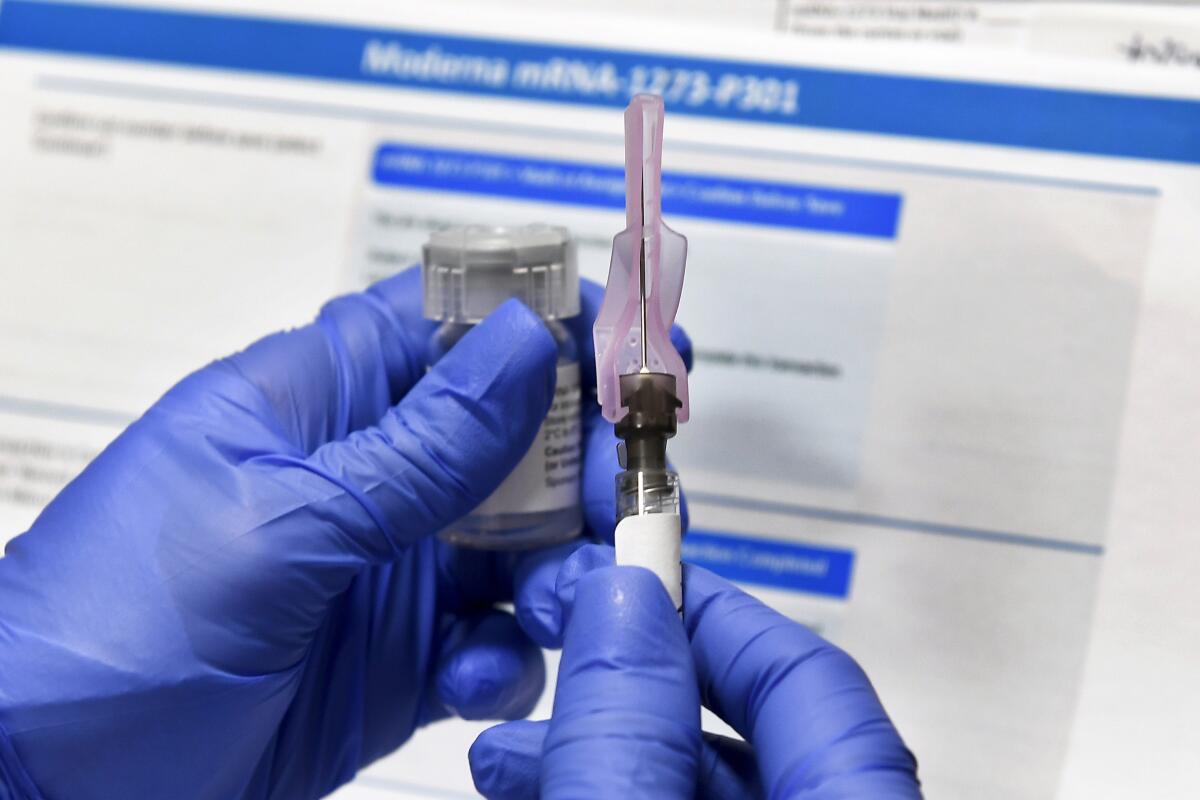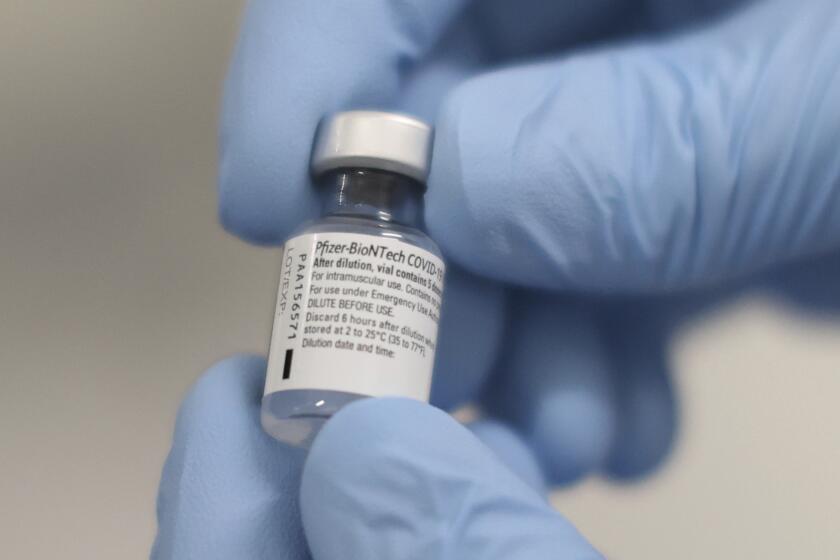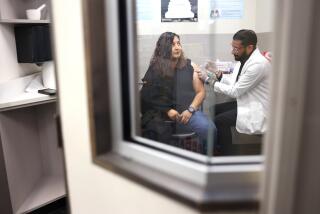Op-Ed: Among those slated to get vaccinated now, we’ll have to prioritize. Who should be last in line?

What if what makes a difference in how quickly the pandemic ends isn’t who gets vaccinated first, but who gets vaccinated last?
There are more than 16 million confirmed cases of COVID-19 infection in the United States and more than 1 million new confirmed cases are accruing each week. At the current pace, we are likely to enter the new year with approximately 20 million confirmed cases. And the true number of infected individuals is thought to be even higher, by some estimates three to 10 times higher. A best guess is that somewhere in the neighborhood of 100 million Americans have already had a SARS-CoV2 infection, and given the current increase in cases, many of them will have been infected recently.
We can use this reality to our advantage. Most of those who have been infected are probably immune to some degree. We should allocate our limited early vaccine supply primarily to people who have not yet been infected. That would allow us to reach population-wide immunity levels faster, and potentially end the pandemic weeks or months earlier. With the nation’s hospitals already reaching capacity and with the economy teetering, every day counts. Delaying vaccination for the 16 million Americans confirmed to have been infected could free up doses for every American healthcare worker, not just those at highest risk.
Of course, we have to proceed with caution. We don’t know that COVID-19 infection always leads to durable immunity, but early data is encouraging. A recent though small study of symptomatic and asymptomatic individuals suggests that the immune response lasts at least several months, and reports of reinfection have so far been rare. The Centers for Disease Control and Prevention says the evidence so far indicates that immunity after a symptomatic COVID-19 infection is likely to last at least 90 days.
COVID-19 vaccines are now being administered to healthcare workers in the U.S. What are your questions about the timeline, the safety or the science?
The CDC has adopted guidelines recommending which groups should receive initial doses of the vaccine, with healthcare workers and long-term care facility residents and staff receiving highest priority. But the shortage of vaccine means that there won’t be enough doses for all members of those groups right away; they will have to be further stratified.
We should stratify within priority groups by infection status. People who have already tested positive for COVID-19, and especially those who have been symptomatic, should get vaccinated last within their priority group.
Voluntary screening programs administered through the workplaces of priority recipients would allow us to identify previously infected individuals. Screening would consist of either reporting a recent, prior confirmed infection or taking a blood test to look for COVID-19 antibodies.
Hospitals, care facilities and healthcare systems are well-equipped to carry out such screening, and one way or another they are going to have wrestle with how to allocate a limited supply of vaccine. An immunity-based approach provides a data-driven, societally beneficial framework for an allocation system that can be put into practice quickly for high-risk populations. It would be a bigger challenge to extend the same prioritization scheme to the next groups that will be in line for vaccination. But by then, we will also have a better handle on the supplies of vaccine.
There are still far too many open questions to recommend that prior infection should bump someone out of a priority group — or out of vaccination — entirely. Does asymptomatic COVID-19 generate the same level of immunity as mild or severe cases? Does immunity last as long in recovered older patients as recovered younger patients? We just don’t know. The initial vaccine doses are targeted at high-risk and vulnerable populations — we need to be quite confident before recommending individuals from these groups entirely forgo an early opportunity to get vaccinated.
The novel coronavirus is still, well, novel. We do not know how long immunity — whether it is conferred by infection or by vaccine — will last. Still, to end the pandemic as quickly as possible and to make our limited doses of vaccine go the furthest, we should identify subgroups of previously infected individuals that we can safely move to the back of the line for early vaccination.
Dr. Amit Kaushal is a clinical assistant professor of medicine (affiliated) and adjunct professor of bioengineering at Stanford University. Dr. Jiayin Xue is an adjunct professor of medicine at Stanford. Robert M. Kaplan is a research professor at the UCLA Fielding School of Public Health. All three are on the faculty at the Stanford Clinical Excellence Research Center.
More to Read
A cure for the common opinion
Get thought-provoking perspectives with our weekly newsletter.
You may occasionally receive promotional content from the Los Angeles Times.











